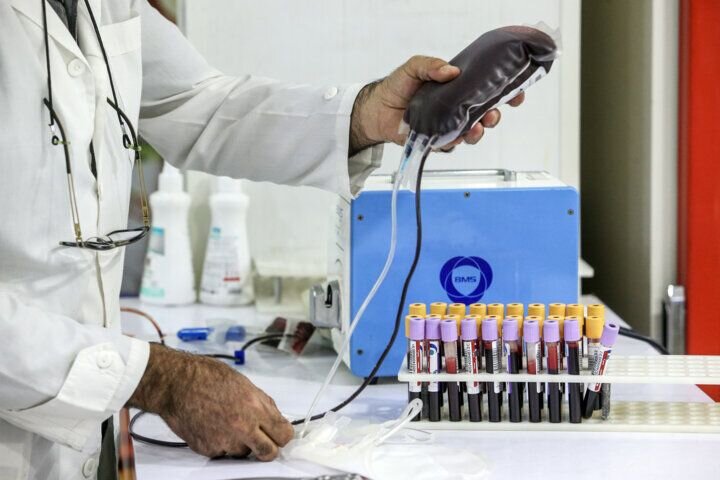IBTO is WHO regional training authority: official

TEHRAN –The Iranian Blood Transfusion Organization (IBTO) is still known as a regional training authority of the World Health Organization (WHO) in blood transfusion medicine, Bashir Haji-Beigi, the IBTO spokesman, has said.
The official underscored the high position of the IBTO in the region and the world for providing healthy blood voluntarily, IRNA reported.
Haji-Beigi said conducting nucleic acid testing (NAT), a molecular technique for screening blood donations to reduce the risk of transfusion-transmitted infections; antibody screening to ensure the recipient and the donor's blood are compatible to prevent complications from blood transfusion; as well as genetic sequencing using Next Generation Sequencing (NGS) method for human leukocyte antigens (HLA) to check tissue compatibility and facilitate hematopoietic stem cell transplantation for patients are among the activities that have been put on the agenda since last year.
4.7% rise year on year
A total of 2,327,997 Iranians donated blood over the past Iranian calendar year (March 2023-March 2024), an increase of 4.7 percent compared to the year earlier.
Tehran and Fars provinces made the largest contributions accounting for more than 16 percent and more than 7 percent of the total blood donation, respectively, IRNA quoted Haji-Beigi as saying.
Last year, the highest growth in blood donation was recorded in the province of Lorestan with 22 percent, followed by North Khorasan with 16 percent, and Kohgiluyeh and Boyer-Ahmad with approximately 13 percent.
The overall blood donation rate was over 54 percent in the country last year with Semnan (69 percent), Yazd (64 percent), and Qom (63 percent) provinces ranking the highest.
Women’s share of blood donation was equal to four percent. A total of 102, 907 women donated blood which had increased compared to the previous year. However, women are expected to get more involved in blood donation.
Women in Lorestan province, nine percent, had the highest contribution followed by North Khorasan, almost eight percent, and Sistan-Baluchestan, over seven percent.
Last year, the blood donation rate reached 27 per thousand people. The highest rate was recorded in Mazandaran province with over 40,000 people donating blood. Semnan province, over 39,000, and Yazd province ranked second and third.
Blood donation in Iran
The average blood donation rate in Iran is 26 per thousand people which places the country in a good situation among other countries.
According to the World Health Organization, the median blood donation rate in high-income countries is 31.5 donations per 1000 people. This compares with 16.4 donations per 1000 people in upper-middle-income countries, 6.6 donations per 1000 people in lower-middle-income countries, and 5.0 donations per 1000 people in low-income countries.
Of the 118.5 million blood donations collected globally, 40% of these are collected in high-income countries, home to 16% of the world’s population.
In low-income countries, up to 54 % of blood transfusions are given to children under 5 years of age; whereas in high-income countries, the most frequently transfused patient group is over 60 years of age, accounting for up to 76% of all transfusions.
Based on samples of 1000 people, the blood donation rate is 31.5 donations in high-income countries, 16.4 donations in upper-middle-income countries, 6.6 donations in lower-middle-income countries, and 5.0 donations in low-income countries.
MT/MG
Leave a Comment